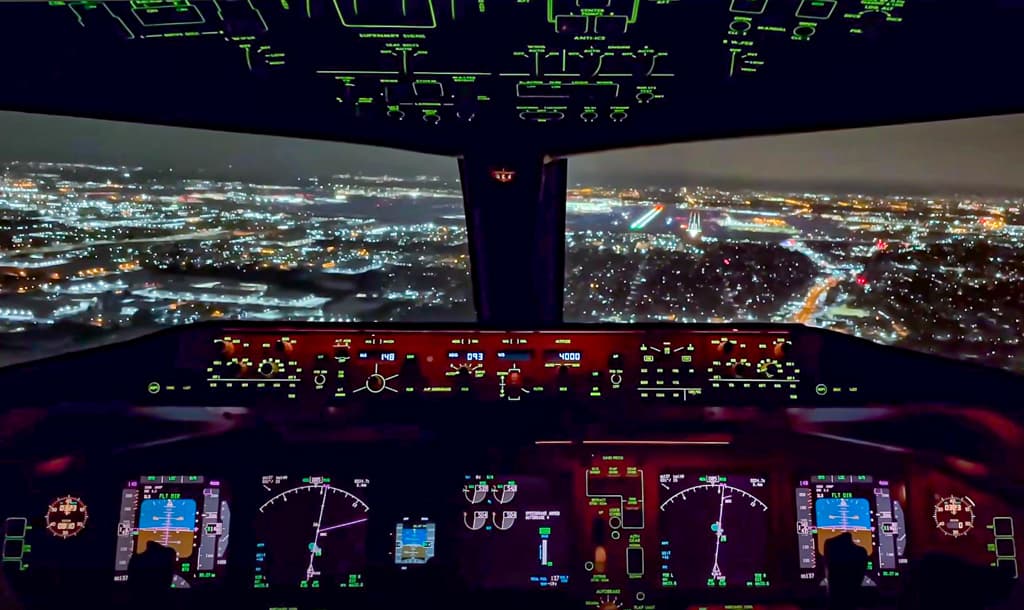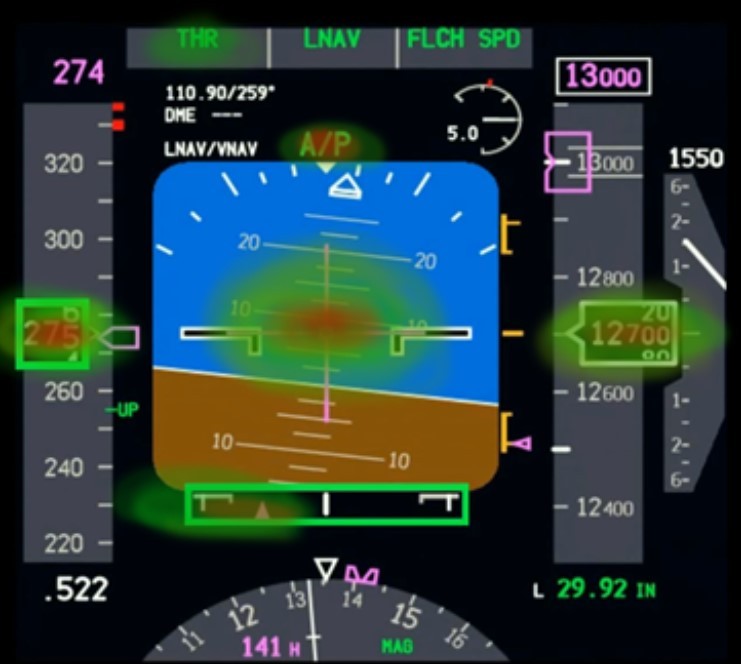Augmented visualization cues on primary flight display facilitating pilots’ monitoring performance
Research Digest
Author(s): Doran Amos, Neil M. Thomas, Kai Dierkes
April 30, 2021

'Cockpit image credit: HighPressureAviation'
Can aviation accidents be prevented by improving flight display design?
In 2003, Asiana Airlines flight 214 crash-landed after striking the sea wall just short of the runway at San Francisco International Airport, leading to three fatalities and 187 injuries. The post-crash investigation found that changes in autopilot modes, which are indicated on the cockpit’s flight display and crucially affect the aircraft’s handling, were missed or misinterpreted by the pilots. During landing, pilots must respond quickly to numerous sources of flight information, increasing the risk that autopilot mode changes are not seen or understood in time.
How can such a tragedy be avoided in future? Researchers from the lab of Prof. Graham Braithwaite at Cranfield University in the UK decided to explore whether an augmented design of the flight display might help pilots to respond more rapidly to autopilot mode changes and avoid errors in aircraft handling that can lead to disaster.
Testing an augmented flight display design during simulated landing
To investigate this, they asked pilots to perform a landing in a flight simulator using either a conventional or an augmented version of the flight display. In the augmented design, green borders appeared to guide pilots’ attention to key information such as airspeed, altitude, or heading data following autopilot mode changes. During the simulated landing, the researchers presented the pilots with a number of unexpected autopilot mode changes to test their performance under challenging conditions.
As well as asking the pilots to rate their perceived performance, workload and effort, the research team wanted to understand exactly how pilots were attending to the information on the flight display during landing. To achieve this, they used a Pupil Labs Core eye tracker to record exactly which areas of the flight display the pilots looked at and for how long.
Understanding pilots’ visual behavior during landing
When they analyzed the eye-tracking data, the researchers found that pilots fixated more often and for shorter lengths of time on the augmented flight display, suggesting that they could access the relevant information on the display more easily. Heatmap analysis (Figure 1) showed that pilots’ attention was more focused on the key flight information related to autopilot mode changes when they used the augmented display.

Figure 1. Pilots’ performance during landing was tested on an augmented flight display that used green boxes to highlight key information. Heatmap analysis of pilots’ visual attention (overlaid as red–green blobs) revealed that they were more focused on critical flight information during the landing.
Importantly, the researchers found that changes in the pilots’ visual behavior helped them to respond faster to autopilot mode changes, with pilots reporting that the augmented display increased their performance, reduced their workload, and decreased the effort required to complete the landing.
Eye tracking can contribute to better aircraft design
Using the Pupil Core eye tracking system, the researchers successfully demonstrated that pilots using the augmented flight display attended more quickly and efficiently to critical flight information during landing. We at Pupil Labs were particularly intrigued that augmenting the flight display using simple, salient visual cues could improve the pilots’ performance. This important research paves the way for an improved flight display design in real aircraft that could help to prevent tragic accidents like the crash of Asiana Airlines flight 214. We are honored that our products could contribute to such vital research and hope that eye tracking will continue to inform future improvements in aircraft safety.
You can read the full paper here: Li, W. C., Horn, A., Sun, Z., Zhang, J., & Braithwaite, G. (2020). Augmented visualization cues on primary flight display facilitating pilot's monitoring performance. International Journal of Human-Computer Studies, 135, 102377.
If you wish to include your published works or research projects in future digests, please reach out!
Flight instrument image credit: Figure provided by the article's corresponding author.